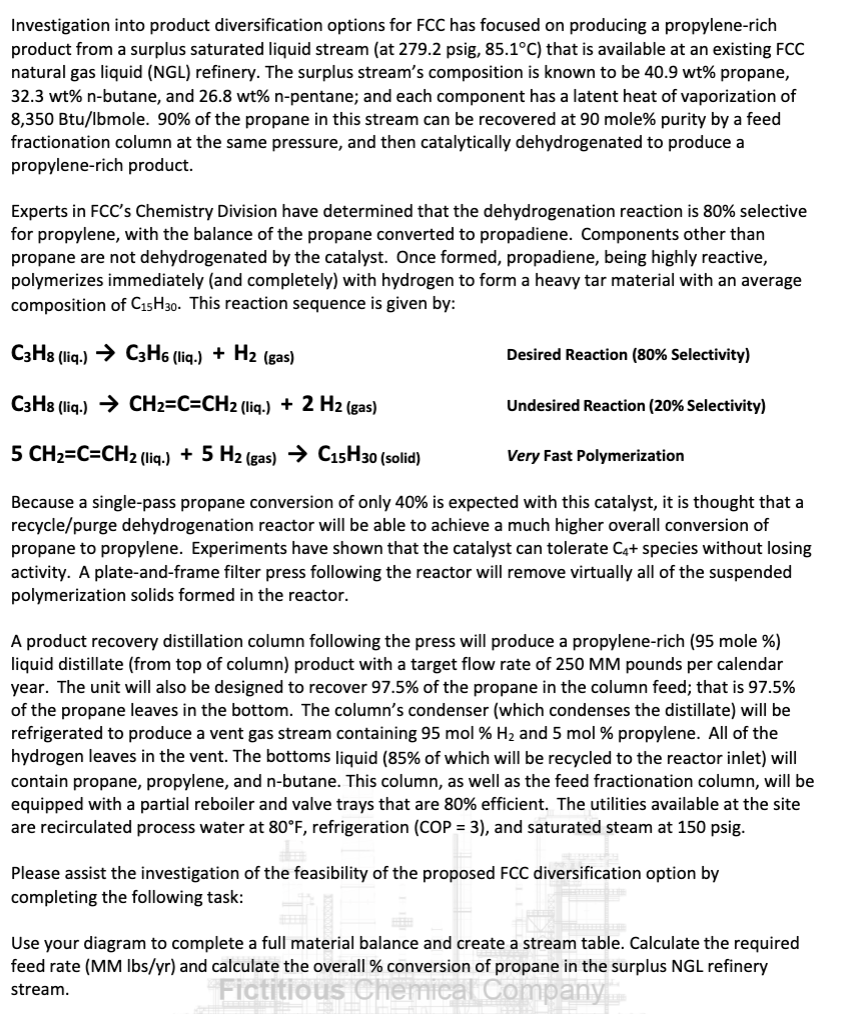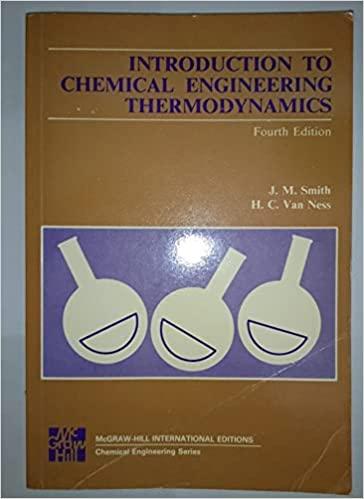Answered step by step
Verified Expert Solution
Question
1 Approved Answer
C 3 H 8 ( l i q . ) C 3 H 6 ( l i q . ) + H 2 ( g
Desired Reaction Selectivity
Undesired Reaction Selectivity
Very Fast Polymerization
Because a singlepass propane conversion of only is expected with this catalyst, it is thought that a
recyclepurge dehydrogenation reactor will be able to achieve a much higher overall conversion of
propane to propylene. Experiments have shown that the catalyst can tolerate species without losing
activity. A plateandframe filter press following the reactor will remove virtually all of the suspended
polymerization solids formed in the reactor.
A product recovery distillation column following the press will produce a propylenerich mole
liquid distillate from top of column product with a target flow rate of pounds per calendar
year. The unit will also be designed to recover of the propane in the column feed; that is
of the propane leaves in the bottom. The column's condenser which condenses the distillate will be
refrigerated to produce a vent gas stream containing mol and mol propylene. All of the
hydrogen leaves in the vent. The bottoms liquid of which will be recycled to the reactor inlet will
contain propane, propylene, and nbutane. This column, as well as the feed fractionation column, will be
equipped with a partial reboiler and valve trays that are efficient. The utilities available at the site
are recirculated process water at refrigeration :COP and saturated steam at psig.
Please assist the investigation of the feasibility of the proposed FCC diversification option by
completing the following task:
Use your diagram to complete a full material balance and create a stream table. Calculate the required
feed rate and calculate the overall conversion of propane in the surplus refinery
stream.

Step by Step Solution
There are 3 Steps involved in it
Step: 1

Get Instant Access to Expert-Tailored Solutions
See step-by-step solutions with expert insights and AI powered tools for academic success
Step: 2

Step: 3

Ace Your Homework with AI
Get the answers you need in no time with our AI-driven, step-by-step assistance
Get Started


